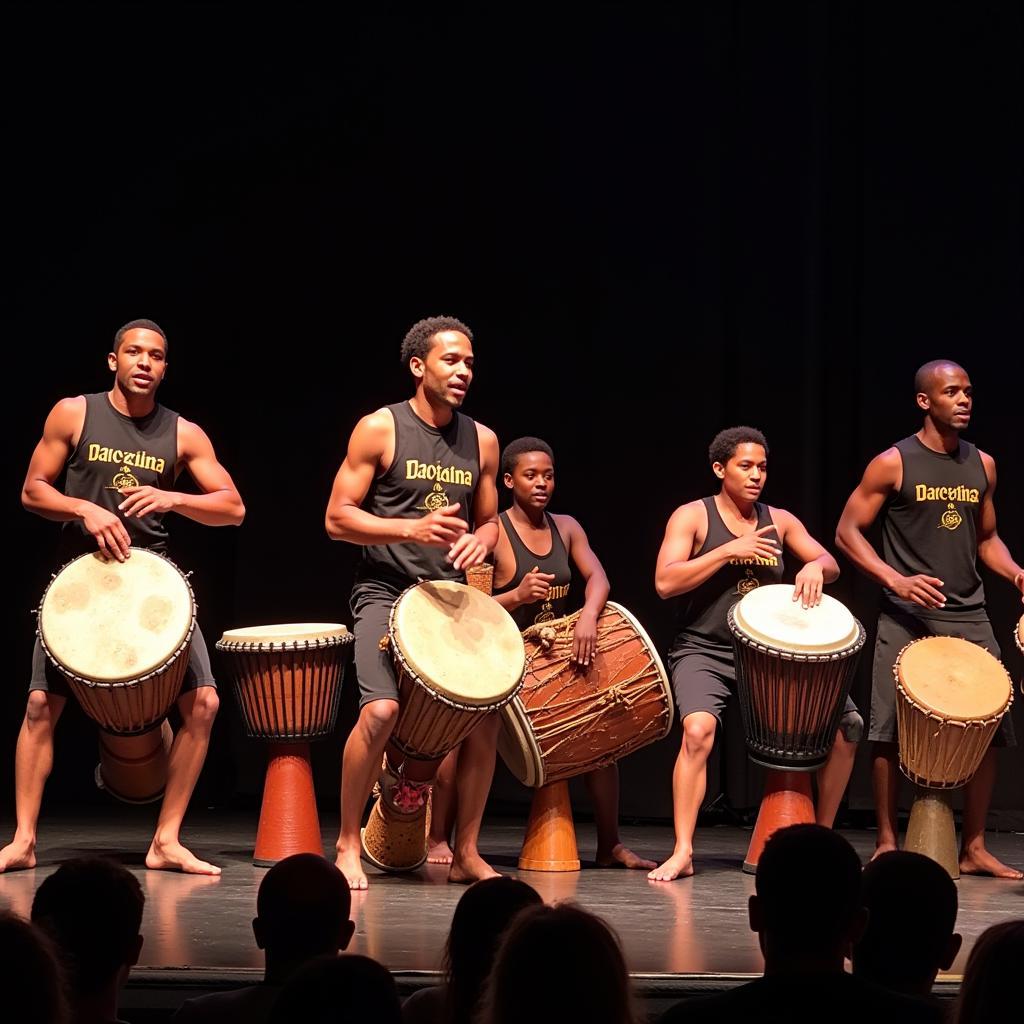African Dance for the Fire Element: Exploring Passion and Power
African dance for the fire element embodies energy, passion, and a connection to the spiritual realm. It’s more than just movement; it’s a powerful expression of life force, often used in rituals, celebrations, and storytelling across diverse African cultures. This exploration delves into the captivating world of fire-inspired dance, uncovering its symbolism, movements, and cultural significance.
The mesmerizing rhythms and dynamic movements of African dance for the fire element are often associated with transformation, purification, and connection to ancestral spirits. These dances aren’t simply performances; they are a vital part of community life, expressing joy, sorrow, and everything in between. They offer a glimpse into the rich tapestry of African culture, where dance transcends entertainment and becomes a powerful language of the soul. Check out more about African healing rituals.
The Symbolism of Fire in African Dance
Fire holds a potent symbolic meaning in many African cultures. It represents life force, energy, and the power of transformation. In dance, it embodies passion, intensity, and the driving force of creation. Often, these dances are performed around actual fires, amplifying the connection to the element and enhancing the spiritual experience. Fire dances can also be seen as a form of communication with the spirit world, invoking ancestors and deities for guidance and protection.
Expressing Spiritual Connection Through Movement
The movements in fire-inspired dances are often dynamic and explosive, mirroring the flickering flames. Rapid footwork, swirling turns, and powerful jumps convey the energy and intensity of the fire element. These dances often involve elaborate costumes adorned with feathers, beads, and masks, adding another layer of symbolism and visual spectacle. The rhythmic drumming and chanting that accompany the dances create a hypnotic atmosphere, drawing participants and observers deeper into the spiritual realm.
Exploring Different Styles of African Fire Dance
While the core theme of fire remains consistent, the specific styles and expressions of these dances vary significantly across different African cultures. From the energetic war dances of the Maasai to the trance-inducing rituals of the San people, each culture imbues its fire dances with unique movements, rhythms, and symbolism. Understanding these nuances provides a deeper appreciation for the diversity and richness of African dance traditions. You can delve into the 13 African zodiac signs to understand the cultural influences.
The Role of Music and Rhythm
Music and rhythm are integral to African fire dances. The pulsating drums, melodic chants, and rhythmic clapping create a powerful soundscape that drives the movement and enhances the emotional intensity. The interplay between the dancers and the musicians creates a synergistic energy that transcends the individual and unites the community. The music isn’t merely accompaniment; it’s a vital force that animates the dance and connects the participants to the spiritual realm.
The Cultural Significance of African Fire Dance
African fire dances are deeply rooted in tradition and play a vital role in various cultural contexts. They are often performed during ceremonies marking important life events, such as births, initiations, and funerals. These dances serve as a way to connect with ancestors, celebrate life, and navigate transitions. They are also a powerful expression of community identity, reinforcing social bonds and preserving cultural heritage. Explore intriguing African club invitation card backgrounds.
Preserving Tradition Through Dance
In a rapidly changing world, African fire dances represent a vital link to the past. They are a powerful reminder of the importance of tradition, community, and spiritual connection. By continuing to practice and share these dances, African communities are ensuring that their rich cultural heritage is passed down to future generations. For a unique perspective, learn more about the African elephant tapestry.
Conclusion
African dance for the fire element is a powerful expression of cultural identity, spiritual connection, and the life force that flows through all things. From the dynamic movements to the symbolic costumes and mesmerizing rhythms, these dances offer a glimpse into the rich tapestry of African traditions. By exploring and appreciating these dances, we can gain a deeper understanding of the profound role that dance plays in shaping and preserving African culture. Do you want to experience the magic of African fire acts?
FAQ
-
What is the significance of fire in African dance?
Fire symbolizes life force, energy, and transformation. -
What are some common movements in fire-inspired dances?
Rapid footwork, swirling turns, and powerful jumps. -
What role does music play in African fire dances?
Music drives the movement, enhances emotional intensity, and connects participants to the spiritual realm. -
When are fire dances typically performed?
During ceremonies marking important life events, such as births, initiations, and funerals. -
Why are African fire dances important?
They preserve cultural heritage, reinforce social bonds, and connect communities to their spiritual roots. -
How are these dances different from other African dances?
The inclusion of fire adds a powerful symbolic and visual element, intensifying the spiritual connection. -
Where can I learn more about specific fire dance traditions?
Research specific African cultures and their dance practices.
Need More Information?
Explore other related articles on our website for deeper insights into African culture and traditions.
Contact Us
When you need assistance, please contact Phone Number: +255768904061, Email: [email protected] Or visit: Mbarali DC Mawindi, Kangaga, Tanzania. We have a 24/7 customer care team.




